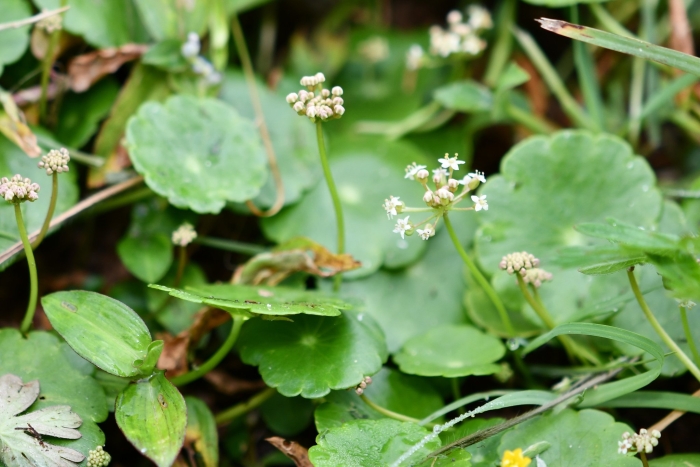Manyflower Marshpennywort
(Hydrocotyle umbellata)
Manyflower Marshpennywort (Hydrocotyle umbellata)
/
/

Mike Ostrowski
CC BY-SA 4.0



















































Estimated Native Range
Summary
Manyflower marshpennywort is valued for its ornamental foliage and is often used in water gardens and as a ground cover in wet areas. It can adapt to a range of wet soil conditions and is relatively low maintenance, requiring consistent moisture to thrive. It prefers full sun to part shade and can be propagated by division. In Brazil, where it is known as acariçoba, it is used in herbal medicine for its anxiolytic, analgesic, and anti-inflammatory properties. However, gardeners should be cautious as Hydrocotyle umbellata can become invasive outside its native range, potentially disrupting local ecosystems. It is advisable to consult local regulations before planting to prevent its spread as a noxious weed.CC BY-SA 4.0
Plant Description
- Plant Type: Herb
- Height: 0.3-0.7 feet
- Width: 1-2 feet
- Growth Rate: Moderate
- Flower Color: Green, White
- Flowering Season: Spring, Summer, Fall
- Leaf Retention: Deciduous
Growth Requirements
- Sun: Full Sun, Part Shade
- Water: Aquatic
- Drainage: Standing
Common Uses
Bee Garden, Butterfly Garden, Deer Resistant, Potted Plant, Salt Tolerant, Water Garden
Natural Habitat
Freshwater habitats such as marshes, wetlands, and the edges of ponds and streams
Other Names
Common Names: Dollarweed , Many-Flowered Marsh Pennywort , Many-Flowered Water Pennywort , Water Pennywort , Hydrocotyle À Ombelle , Umbrella Pennyroyal , Acariçoba , Acaricaba , Capitão , Para-Sol , Erva-Capitão
Scientific Names: Hydrocotyle umbellata , Hydrocotyle vulgaris , Hydrocotyle umbellulata , Hydrocotyle umbellata var. umbellata , Hydrocotyle umbellata var. ambigua , Hydrocotyle ambigua , Hydrocotyle caffra , Hydrocotyle scaposa , Hydrocotyle fluitans , Hydrocotyle incrassata
GBIF Accepted Name: Hydrocotyle umbellata L.